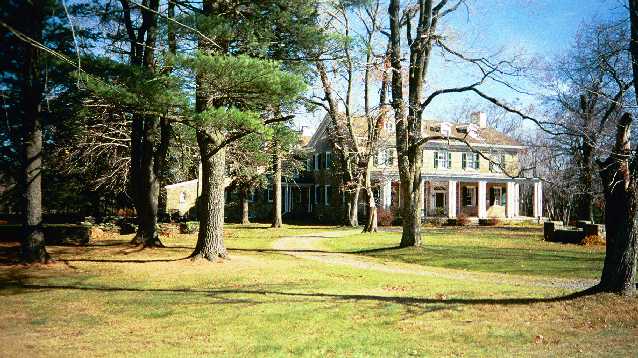
The Ricketts Estate
Ganoga Lake, PA
A Contemporary View
December 15, 2001
Photo Taken by Mike and Debbie Krause
For comparison, click Here for a view of the Estate in 1908
As shown in an old undated RPPC postcard auctioned on eBay in September 2014.

The Ricketts Estate
Ganoga Lake, PA
A Contemporary View
December 15, 2001
Photo Taken by Mike and Debbie Krause
For comparison, click Here for
a view of the Estate in 1908
As shown in an old undated RPPC postcard auctioned on eBay in September 2014.
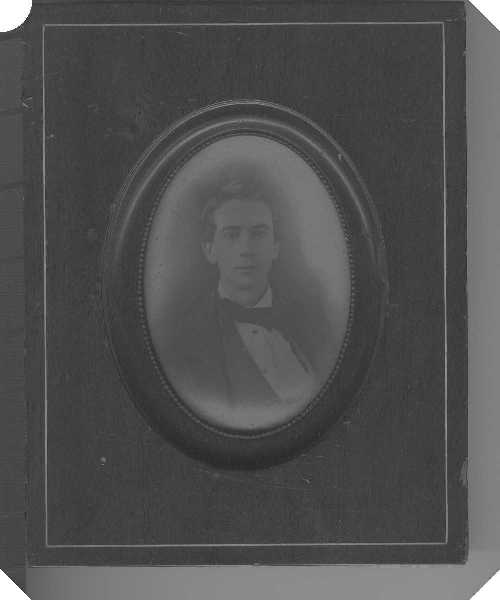
Robert Bruce Ricketts
April 29, 1839 - November 11, 1918
Builder of the North Mountain House
Reproduced with permission of the Sullivan County Historical Society
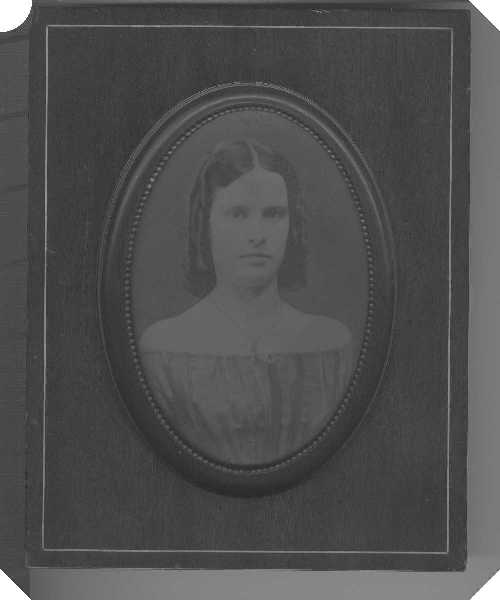
Elizabeth Reynolds Ricketts
April 13, 1842 - November 19, 1918
Reproduced with permission of the Sullivan County Historical Society
The developer of North Mountain House, the Ricketts estate, was Colonel Robert Bruce Ricketts, a Civil War veteran and prominent local businessman after the War. Above are two pictures of Robert and his wife, Elizabeth (Reynolds) Ricketts, that were donated to the Sullivan County Historical Society by their granddaughter in 1957. Both Robert and Elizabeth, and assorted other relatives, are buried at the Ricketts Cemetery in Colley, Sullivan County, PA.
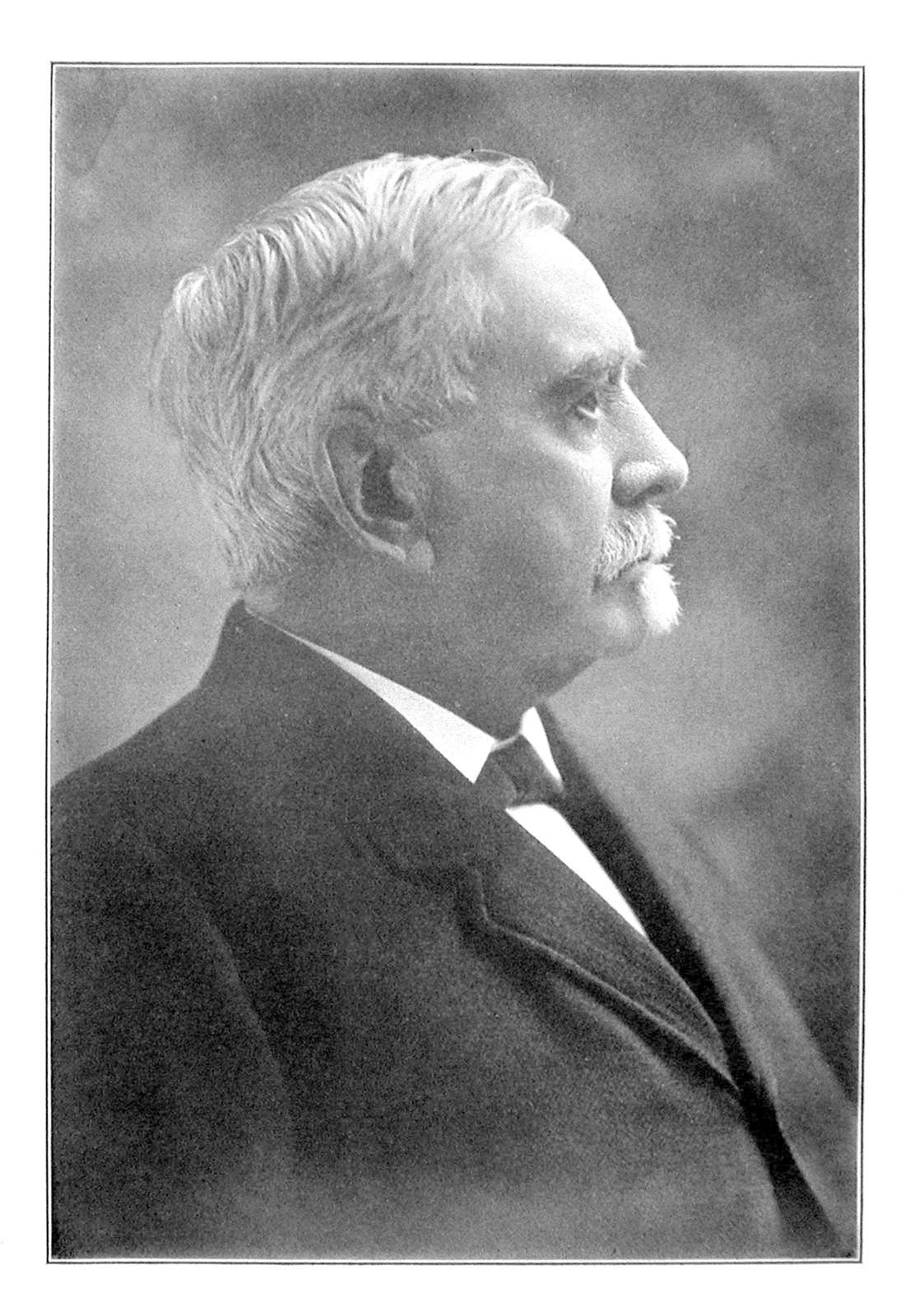
Robert Bruce Ricketts
Photo Courtesy of Kris Campbell
Professional Copy of the Original Hanging in the Visitors Center at Ricketts Glen State Park
The William R. Ricketts Residence
A History and Description
by William R. Ricketts
Editor's Note: Ricketts is a ghost town that was established as
a lumber mill company town in Sullivan
and Wyoming counties in the Pennsylvania. Ricketts was built in 1890 along Mehoopany Creek in both
Colley Township in Sullivan County and Forkston Township in Wyoming County. Its existence was to support the
sawmills of the Trexler and Turrell Lumber Company. The town spread across game lands in both counties,
The town was named for Colonel Robert Bruce Ricketts, a Civil War veteran recognized for his valor at Gettysburgh.
He owned most of the land and timber around the village, and who was a partner in the company with
Harry Clay Trexler, J.H. Turrell, and others. Ricketts had 800 inhabitants at its peak and
extended into the northernmost section of what is now Ricketts Glen State Park. Rail lines were
built to the mills at Ricketts, including the Bowman Creek branch of the Lehigh Valley Railroad, which
opened in 1893. The mills closed in 1913 when the lumber was exhausted and the last house was torn down
in the 1930s.
An article in the Wyalusing Rocket-Courier (May 15, 2014) gives us a more detailed impression of what Ricketts once looked like. The town lay on either side of what is now State Route 487; a historical sign dedicated to the "Rickets Ghost Town" was placed there on May 24, 2014. One part of the town, called
"Downtown Ricketts", loacated in Wyoming County, was the commercial and residential center. This part of town held mills built to manufacture
excelsior, barrel staaves and headings; the company store; the rail station; and the hotel, church (Lutheran, by denomination) and community hall. The other side of the
highway, located in Sullivan County, and known as "Uptown Ricketts", was a true industrial lumber town--it contained a large hardwood mill, a two-room schoolhouse,
blacksmithery, water tower and "company" homes where the management and their families lived.
Today, the entire remains of Ricketss lie in Ricketts Glen State Park and are preserved for wildlife and conservation. The original apple trees planted ovber 125 years ago are still
pruned and maintained by the Pennsylvania Game Commission.
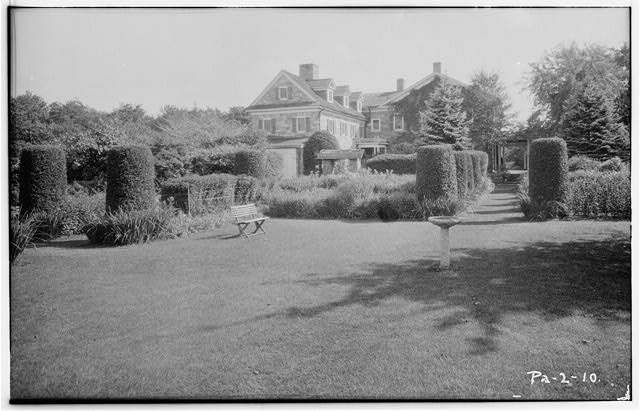
The Ricketts Estate at Ganoga Lake
North Mountain, Colley Township
Sullivan County, PA
Source: Historic American Buildings Survey, 1937
The original name of this lake was Robinson's Lake, or Long Pond, so named from a hunter by the name of Robinson, who it is said had a cabin at the upper end in the early days of 1800. In 1881, the late Senator Charles R. Bucalew, of Bloomsburg, suggested to my father, the name of Ganoga, an Indian name in the Seneca Indian language, meaning "water on the mountain" and so this lake was named. This lake perched at the top of the main ridge or plateau of the Allegheny Mountains is really a large spring, as it has only a small spring inlet 50 ft. from the upper end, and is fed by underground spring throughout its surface. The lake is about one mile long, lacking 600 to 700 ft. and an average width of 700 to 800 ft. of covering about 70 acres. Being 2268 ft. above tide it is the highest lake east of the Rocky Mountains * and is the source of two streams, the Pond Branch of Kitchen's Creek and by an underground outlet the beginning of the Mehoopany Creek.
* Editor's Note: On May 14, 2004, Ron Hontz sent us the following e-mail message:
I grew up just downhill from the lake, in Ross Township, Luzerne County and I had never heard this claim before. Naturally curious and a stickler for detail, I just checked with the US Geological Survey's office in New Cumberland, PA. They have reported that "Ganoga Lake is listed at 2266 ft in the Geographic Names Information System (incorrectly listed as being in Luzerne County - I did send in notification of this error). Just searching in Pennsylvania, there is a lake higher than Ganoga Lake in Somerset County named Siebert Lake at 2290 feet. To search the database visit: http://geonames.usgs.gov/ .
On June 27, 2008, Mike Banas countered that Lake Ganoga has the highest elevation for a NATURAL lake. Siebert LAke was most likely man-made. However, we have not been able to establish as of this time whether this speculation is accurate.
Trexler and Turrell Company Store
Ricketts, PA 1902
Source: An Old Postcard Owned by Deb WilsonIn 1811 when the Pennsylvania Legislature created the different State Roads, the Berwick and Towanda Turnpike Road was born, but actual building of the road over the mountain was not begun until 1822, and must have been completed by 1827, as it is known that the Berwick and Towanda Turnpike Co. began running stages that year. This road ran from Berwick, Pa. to the 80's mile stone in Bradford County. The toll gate for this part of the road stood at the Watson place at the top of the mountain, named for the first and only keeper Watson, described as man 6 ft. 4 in. in stature and a deserter from the English army during Perry's victory on Lake Erie. Here he married, reared a family, conducted a small farm and died about 1852. Stages on this turnpike ran twice daily, leaving Berwick in the morning and stopping at the Long Pond Tavern, a log house, standing a few feet north of the stone house, for lunch, and changing horses, for the long eight mile ride ahead called for many years road of hell on account of poor construction and very bad country it traverses, where stood Schrifogel's Hotel, where the passengers spent the night before proceeding on their journey, the stage south leaving Schrifogel's in the morning, lunching at Long Pond and arriving at Berwick in the evening.
This Long Pond Tavern was for many years the mecca for hunters and fisherman. Senator Bucalew visited the Long Pond Tavern and relates:
"I with a party of friends fished for trout up the West Branch of Fishing Creek and towards evening climbed the mountain at a point (now known as Cliff View) one mile S.W. of the house and spent the night. We found here a party of fishermen and some Germans then at work on the Lee Road. These Germans were part of the colony brought from Philadelphia consisting of 50 families and were constructing a road from the Turnpike, 1/3 mile N., known as the Lee Road and ending at the Susquehanna River. Four miles of this road was completed at the time, June 1849, and continued three miles further where the first family settled and so on to the end, about twenty miles. This is still called the Lee Settlement.
"At supper that night my party was seated at one end of a long table and other fishermen at the other. During the meal, noticing that they were having other fish than trout, I had our trout passed to them and they all declined. Surprised, I asked them why they declined the trout and was told to try some of their fish, bull-heads caught in the lake that afternoon. We did and from that moment the trout were neglected. The bull-heads were caught by bobbing-- a mass of worms tied to the end of a small stick, which placed in the water the bull-heads being so plentiful would grab it and then be shaken off in the boat. It is said that in a very short time a boat load could be had."
A few of this German colony, finding the mountain unattractive settled at the foot of the mountain, and cleared the farms now known as Freedly, Wickam, Adam Kale, etc.
My grandfather, Elijah Green Ricketts, of Orangeville, and his brother Clemel Ricketts, of Roarsburg, Pa., Columbia Co., were very fond of hunting and fishing and for many years had gone to Schrifogel's Hotel in the Spring and Fall for this purpose. In the Fall of 1850 they went there as usual and found the hotel full and had to be accomodated by having mattresses placed in the so-called parlour on the floor where they spent a very unpleasant night. On their journey home from this trip they decided that they should have a fishing and shooting lodge of their own, and being very much taken with the site around Long Pond, purchased during the following winter 5,000 acres, on which they began construction of the stone house in 1851 and completed in 1852. This was known for years as the Ricketts Folly, for the reason that no one of those days would understand why anyone would construct a stone house in such a wilderness. Clemel Ricketts was a great lover of Colonial Architecture and was the author of book published in the early forties, "Ricketts Notes on Travel", in which he tried to show everything concerning the origin of our Colonial Architecture that came from England or the Continent. So the stone house was built on Colonial lines. The walls were entirely constructed of block of field sandstone about 17 inches square of various thickness, the building is "L" shaped, main part being 60 x 38 ft., with a 40 x 26 ft. addition to the rooms on the right side. First floor is divided by a hall 32 x 11 ft., two rooms on the left and two on the right 16 x 22.6 each and the addition had two rooms, the second floor being cut up into bedrooms. This building finished in the summer of 1852, was opened as a tavern and continued so through all the year.
Soon after the return of my father Colonel Robert Bruce Ricketts, from the Civil War, he purchased from his father and uncle their interests, stone house and the 5,000 acres and began buying additional warrants until in 1873 he had outright or controlled 66,000 acres (about 100 sq. miles). In 1872 he entered into partnership with Mr. William Curtain of Philadelphia and Col. Wilson of Trenton, and started a lumber business; the mill being situated about one-half mile S.E. of the house. From this mill came most of the lumber used in building an addition to the hotel begun also in 1872, a three story building, built on the lines of a child's Noah's ark with a shed roof forming a dark garret on the fourth floor lighted only by a small window at each end. With the exception of a lobby, billiard room, double parlor and storage room, the entire building was given up to bedrooms.
In the summer of 1873 this was opened as the North Mountain House catering to both summer and winter guests, and continued for thirty years or until November 1903, when it was closed and became the summer residence of the Ricketts family. During these thirty years, I think it was quite unique for it catered to the relations and friends of Col. Ricketts and they with their families would come as soon as school was over in June and remain until September first, when school opened again, and it was like on big family. Most of the patrons came from Wilkes-Barre, but it entertained many other people from Philadelphia, New York, Scranton, Harrisburg, Williamsport besides many other places.
In 1893 the Lehigh Valley Railroad built a branch of the Bowmans Creek Branch from Ricketts to the upper end of Ganoga Lake, four miles, and beginning on Sunday tenth, 1893, we had a daily train in each direction, morning to Wilkes-Barre, evening to Towanda. These trains continued to run for ten years or until we closed the hotel in 1903.
Editor's Note: In March 2006, we received the following communication from Harry Owens:Although I now live in Mechanicsburg (10 miles from Harrisburg), I grew up in Trucksville during the final years of the Bowman's Creek Branch's existence. I remember seeing the little train going up through town and over the large trestle on Sunday afternoons and wondering where it was going. That fascination never died although many years would pass before I did anything about it.
In the late 1970's and early 80's, I interviewed old railroaders and began to amass materials and pictures. However, I was a career Army officer and my time at home was scarce. In 1996, while assigned as the Professor of Military Science at Dickinson College, I was finally able to take the time and write a history of the Branch. The document was then published in the magazine of the Anthracite Railroads Historical Society: Flags, Diamonds and Statues. If you would like, I will send you a complimentary copy.
Of course, once I published the article, the flood gates opened and people far and wide sent me more information and photos of the Branch. While I am not an expert, I probably have done more research on it than most. In October 2005, I was asked to do a presentation at College Misericordia. For that occasion I developed a powerpoint presentation, surprising myself with all of the photos I have amassed. I also have two videotapes of freight runs to Noxen in the late 1950's.
I have now been asked to give my presentation to the Anthracite Railroads Historical Society next Friday evening. So, yesterday I was boning up on my history and reading your website when it came to me that pictures of the Ricketts Estate should be included. The original powerpoint has two photos of the log depot at Ganoga Lake, but nothing more. I am very interested in what William Ricketts said about regular train service to the Lake. I have never been able to uncover any schedules of the Lehigh Valley Railroad that show regular daily service to Ganoga Lake. I have only seen references to special excursions. However, my earliest schedule is 1901. Perhaps one day I'll be lucky enough to find a schedule from the 1890's.
Although this message is longer than I intended, there is one more tidbit I would like to add. In the early 1960's my uncle was one of the original landowners at Ganoga Lake. In fact, his cottage was directly across the road from the Ricketts estate. I spent many happy summer days there and was all over the grounds. Unfortunately, I was only about 12 years old and the historical significance completely escaped me. One very clear memory is that no matter how hot the day, the water in the Lake was cold. I vividly remember my teeth chattering as I emerged from a swim.
Excelsior and Stave Mills
Ricketts, PA 1902
Source: An Old Postcard Owned by Deb WilsonIn the summer of 1876 there was opened a Summer School for boys conducted by Dr. John. W. Rotherock of Wilkes-Barre (later head of Pennsylvania Forestry), Dr. Howard Kelley of Philadelphia (later head of John Hopkins), Dr. Lewis H. Taylor of Wilkes-Barre (Artist). This was the first Summer School for boys or girls ever held, either in this country or abroad. The first year there were 26 scholars, I believe. The school was a great success and continued for two months. It consisted of two small one story houses and a tent colony for the boys and some of their masters, also there was a dining tent. In 1877 it was continued by the same heads but without Dr. Rotherock. There were 19 scholars the second year. This was located in the field S.E. of the house. Regular school work was conducted with drawing or painting looked after by Mr. Franck. Also, they had aquatic sports, having a camp landing on the shore of the lake, with boats for fishing or rowing and a raft with diving board for swimming. And from this small beginning has grown the great Summer Schools of today.
In 1897 the frame house was torn down and the debris removed to make way for the landscape garden we have at north of the house. In 1913 Mr. Henry Atherton of Wilkes-Barre was asked to prepare plans to renovate the stone house and during that summer and fall this was carried out with an addition to the north side built.
Another item of history was the "Wheeler & Wilson" Oil Speculation. During the summer of 1865, a man named Hadley salted the springs with oil balls so it would appear on the surface and got the Wheeler & Wilson Sewing Machine people interested. They furnished the money and during 1865 and 1866 put down two drill holes, (1) at the old Dodson Mill (now Lake Rose) 2100 ft. deep and (2) on the Farm 1900 ft. deep. It is said that Wheeler & Wilson spent about $40,000.00. Hadley escaped to Canada and was never caught.
The Trexler & Turrell Lumber Co. began operations by building a mill and creating the town of Ricketts, four miles N.E. of the stone house, in 1890, the Lehigh Valley R.R extending its line from Lopez for this purpose. This mill had a capacity of 75,000 ft. per day and contained a circular, band and gang saw and was undoubtedly the largest in this part of the country. The lumber operations continued for twenty-three years, or to 1913. They manufactured hemlock, spruce, maple, birch, cherry and beech lumber for all purposes. The spruce was considered one of the finest varieties ever sawed in this country.
The town of Ricketts founded in 1890, of course, died when the mill operations ceased in 1913 and existed about 24 years. At its height it had about 800 inhabitants. Also they harvested 100 acres of original pine forest that Dr. John W. Rotherock claimed was the finest pine standing in Pennsylvania.
In the 1830's a man by the name of Siclar settled on the mountain and built a small mill on the site of Lake Leigh (Concrete Dam) and turned out cherry bedsteads. And in 1842 a man named Dodson also built a mill to turn out cherry bedsteads on the site of the Rose Lake dam. Both of these were squatters and stole the timber. These bedsteads were sold in Philadelphia and were very much in demand at the time.
The discovery of the falls on Kitchen's Creek and its branches was made by a man and his son about 1865, when they fished down the Pond Branch and reported what a hard trip they had had getting around falls on the stream. The Lakes Leigh, Jean and Rose were created during 1905 to 1907 for Electric Power purposes, but the depression of 1907 and the World War killed the project and saved this stream for posterity.
Historic American Buildings Survey
Thomas H. Atherton, District Officer
139 South Main Street
Wilkes-Barre, Pennsylvania
1937
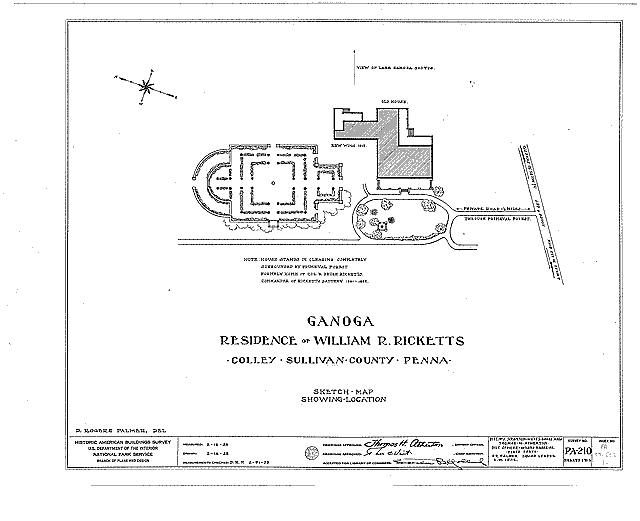
The Ricketts Estate Layout
At the time of this sketch map,
the house lay to the south of Lake Ganoga
and was surrounded by primeval forest
Source: Historic American Buildings Survey, 1937
Note: The original file contains five measured drawings, three black and white photos, five data pages plus a cover page. It was composed by William Reynolds Ricketts (July 29, 1869-October 14, 1956). This document was transcribed for the Sullivan County Genealogical Web Project by Connie Hembree Gaban, October 7, 2001. There are many sources of information about the Ricketts family, the town of Ricketts and the Ricketts estate. You can learn more about the Ricketts family and the history of Ricketts Glen State Park at these two sources:
The History of Ganoga Lake
Ricketts Glen State Park History.
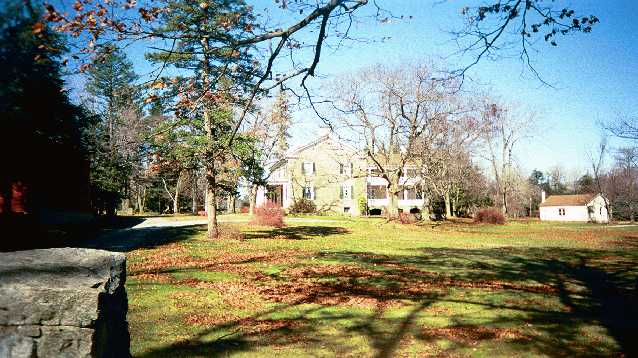
The Ricketts Estate
Ganoga Lake, PA
Another Contemporary View
December 15, 2001
Photo Taken by Mike and Debbie Krause
Copyright © 2001 Robert E. Sweeney and individual Contributors. All Rights Reserved. Prior written permission is required from Robert E. Sweeney and individual Contributors before this material can be printed or otherwise copied, displayed or distributed in any form. This is a FREE genealogy site sponsored through PAGenWeb and can be reached directly at ~Sullivan County Genealogy Project (http://www.rootsweb.com/~pasulliv)